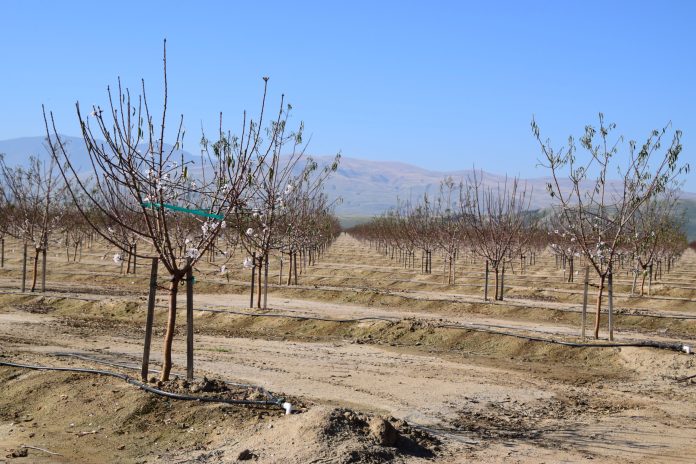
Weekly ET rates are available online on the Sac Valley Orchards website along with information on how to use the reports. UCCE irrigation resources Farm Advisor Allan Fulton explained that the weekly tables provide real-time estimates of crop ET for crops with approximately 70 percent or more midday canopy shading. The weekly reports provide both crop ET estimates not adjusted for irrigation system efficiency and adjusted for 70-, 80- and 90-percent irrigation efficiency.
Measurement of applied water and understanding of the irrigation system performance are necessary to use these weekly reports. Knowing how closely the amount of irrigation water plus rainfall matches estimates of real-time orchard ET can help make irrigation scheduling decisions, especially if this information is teamed with measurements of tree water status with a pressure chamber or with soil moisture monitoring.
Using weather-based evapotranspiration rates as a guide for irrigating young orchards can be a helpful water management tool, but adjustments will be needed as most published rates of water demands are for mature trees (about five years and older.)
In a video tutorial, Fulton explained that ET rates should be adjusted for tree size and irrigation efficiency. Soil variability and irrigation system performance should also be taken into account when making irrigation management decisions for young trees.
Irrigation management in young orchards can be challenging due to the expanding tree canopies and root systems from planting up to production. Young orchards, while not yet yielding much crop, are using water and nutrients to grow. Expanding leaf area means more leaves with stomata to transpire water and take in carbon. As roots grow, they may also access additional soil moisture other than from irrigation.
Smaller trees have lower ET rates, Fulton said. The question is how much lower and how does it change as the trees grow? Older research has shown that once first leaf trees are established and growing well, almonds may require on average about 40 percent of the ET rate for a mature tree over the course of the first season. More recent research in almonds with lysimeters suggests these older research based estimates may even be conservative (a bit low.) First leaf walnut tree water demand is on average 30 percent of the ET rate for a mature walnut tree. By the fourth year, demand by an almond tree is 90 percent of the ET rate for a mature tree. In walnuts, fourth year trees are on par with a mature tree especially if vegetation in the orchard middles is growing.
Many factors can influence how a young orchard develops ranging from previous crop if it is an orchard replant situation, soils and site preparation, planting date, the source of the new trees, nutrition, and weed competition. As a result, a more advanced and site-specific approach to adjusting ET based on field measurement of canopy shading may interest growers.
Examples of how to specifically adjust the weekly reported estimates of crop ET for mature almond, walnut and other tree crops for younger developing orchards will be provided in an upcoming video series that should be posted in July or August 2020 at the Sacramento Valley Orchard Source website. It is also covered in the Almond Board’s Irrigation Continuum https://www.almonds.com/almond-industry/orchard-management/water-and-irrigation















